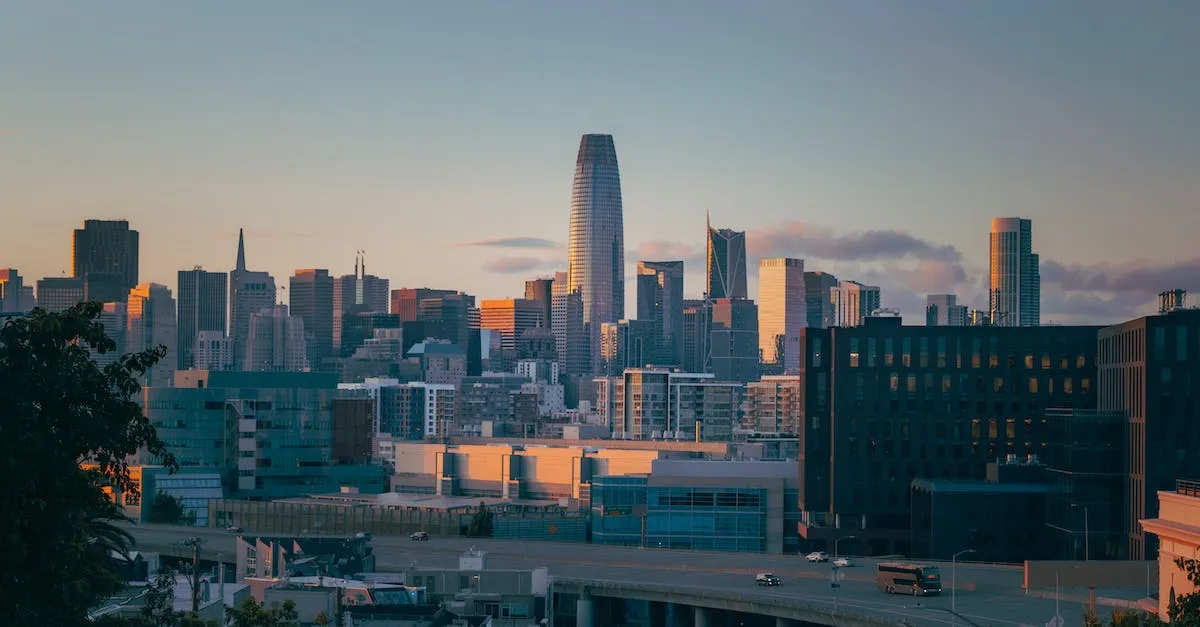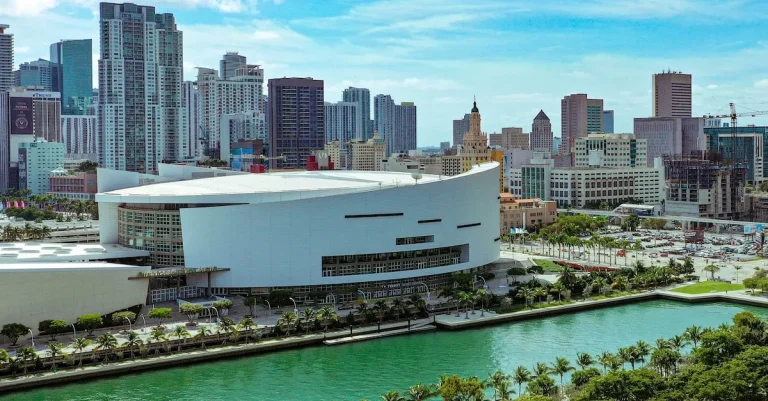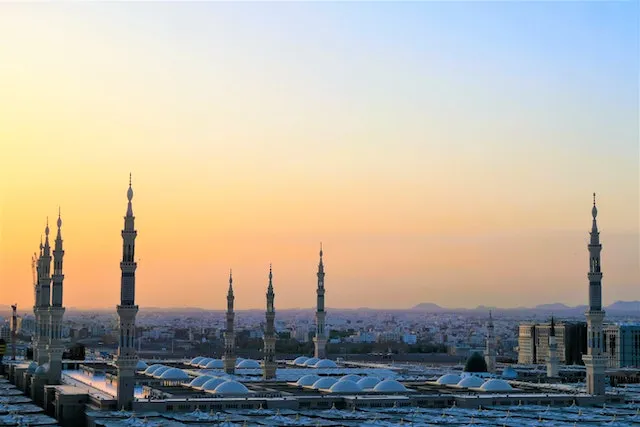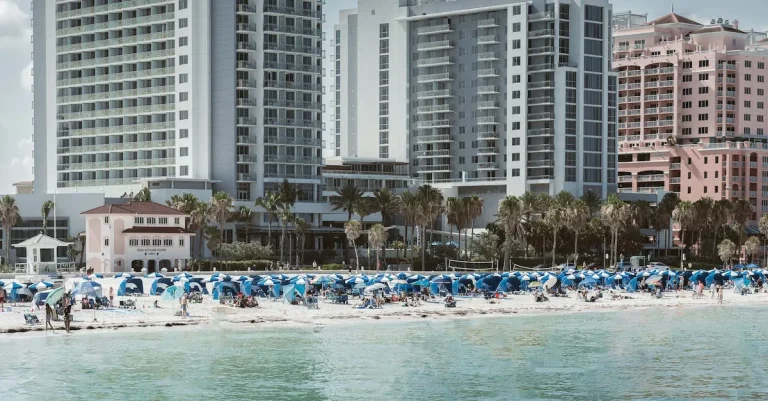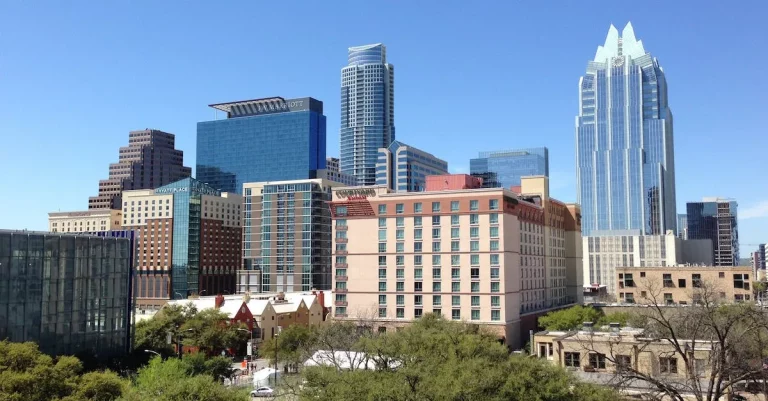What Is The Warmest Month In San Francisco?
San Francisco is known for its mild year-round temperatures, but the city still experiences seasonal changes. If you’re wondering when San Francisco is hottest, read on to learn all about San Francisco’s warmest month.
If you’re short on time, here’s a quick answer: The warmest month in San Francisco is September.
In this comprehensive guide, we will dive into San Francisco’s climate patterns, examining historical weather data to pinpoint the warmest month. We’ll look at average highs and lows throughout the year and discuss the factors that contribute to September being the hottest month. We’ll also compare September against other warm months and see how much warmer it is. By the end, you’ll have a detailed understanding of San Francisco’s seasonal temperature cycle and when to expect the hottest weather.
Climate Overview of San Francisco
San Francisco is known for its unique Mediterranean climate, characterized by mild temperatures and distinct seasonal changes. The city experiences moderate temperatures throughout the year, making it a popular destination for tourists and residents alike.
Mediterranean Climate
San Francisco’s climate is classified as Mediterranean, which means it shares similarities with the coastal regions of countries like Italy, Spain, and Greece. This type of climate is typically characterized by mild, wet winters and warm, dry summers.
The city’s proximity to the Pacific Ocean has a significant influence on its climate. The cool ocean currents help regulate temperatures, preventing extreme highs and lows.
Consistently Mild Temperatures
One of the defining features of San Francisco’s climate is its consistently mild temperatures. The average annual temperature in the city ranges from 57 to 64 degrees Fahrenheit (14 to 18 degrees Celsius).
This makes it one of the most pleasant cities to live in, as residents can enjoy comfortable weather year-round.
Even during the warmest months, San Francisco rarely experiences scorching heat. The city’s summer temperatures typically range from the mid-60s to the mid-70s Fahrenheit (18 to 24 degrees Celsius). This makes it an ideal destination for those seeking relief from the sweltering summer heat found in other parts of the country.
Seasonal Changes
While San Francisco enjoys mild temperatures throughout the year, it still experiences distinct seasonal changes. The city’s winters can be damp and rainy, with average temperatures ranging from the mid-40s to the mid-50s Fahrenheit (7 to 13 degrees Celsius).
It’s advisable to pack a light jacket and an umbrella when visiting during this time.
Spring and fall in San Francisco bring pleasant weather, with temperatures ranging from the mid-50s to the mid-60s Fahrenheit (13 to 18 degrees Celsius). These seasons are often considered the best times to visit, as the city blooms with colorful flowers and offers comfortable outdoor activities.
Average Monthly Temperatures in San Francisco
San Francisco, known for its cool and mild climate, experiences relatively stable temperatures throughout the year. However, there are certain months when the city sees warmer temperatures compared to others.
September is the Warmest Month
According to historical data, September stands out as the warmest month in San Francisco. With an average high temperature of around 73°F (23°C), residents and visitors can enjoy pleasant weather perfect for outdoor activities.
The city experiences the peak of its summer temperatures during this time, providing a great opportunity to explore popular attractions such as the Golden Gate Bridge, Alcatraz Island, and Fisherman’s Wharf.
July and October Also See High Temperatures
While September takes the crown as the warmest month, it’s worth noting that July and October also witness relatively high temperatures in San Francisco. In July, the average high temperature reaches around 68°F (20°C), making it an ideal time to soak up the sun at the city’s beautiful beaches.
Similarly, October sees average high temperatures of around 68°F (20°C), providing a pleasant transition from summer to fall.
January is the Coldest Month
On the other end of the spectrum, January is considered the coldest month in San Francisco. With average high temperatures around 57°F (14°C), it’s a good idea to pack a jacket or sweater when visiting during this time.
However, despite the cooler temperatures, San Francisco still offers plenty of indoor attractions such as museums, art galleries, and delicious dining options to keep visitors entertained.
It’s important to note that while these average temperatures provide a general overview of the weather patterns in San Francisco, they can vary from year to year. It’s always a good idea to check the latest weather forecasts and plan accordingly for your visit to the city.
Why September is the Warmest Month
San Francisco, known for its cool and foggy weather, experiences a unique phenomenon where September stands out as the warmest month of the year. Several factors contribute to this unusual weather pattern.
Increased Sunlight Hours
September marks the transition from summer to fall, and during this time, the days become longer in San Francisco. The increased sunlight hours allow for more time for the sun to heat up the city, resulting in higher temperatures.
The longer days provide ample opportunity for the sun’s rays to penetrate the fog and warm up the atmosphere.
In fact, according to the National Weather Service, San Francisco experiences an average of 13 hours of daylight in September, compared to around 10 hours in June and July. This extended exposure to sunlight contributes to the rise in temperatures and makes September the warmest month.
Less Fog
Fog is a common occurrence in San Francisco, particularly during the summer months. However, as fall approaches, the fog tends to dissipate, resulting in clearer skies and warmer temperatures. The decrease in fog cover allows the sun’s rays to directly reach the city, leading to higher temperatures.
According to data from the Golden Gate Weather Services, San Francisco experiences an average of 8 foggy days in September, compared to around 18 foggy days in June and July. This reduction in fog significantly contributes to the warmer weather experienced during September.
Late Summer Heat
September is often referred to as the “Indian Summer” in San Francisco, as it brings the last surge of warm weather before the cooler fall months set in. This late summer heat is a result of various factors, including the warming of the Pacific Ocean and the influence of high-pressure systems that push warm air towards the city.
The warm waters of the Pacific Ocean, combined with the absence of strong onshore winds, contribute to the warmer temperatures in September. Additionally, the presence of high-pressure systems in the region helps trap warm air, creating a heat dome effect that further enhances the warmth in San Francisco.
How Much Warmer is September Than Other Months?
When it comes to the warmest month in San Francisco, September takes the crown. But just how much warmer is September compared to other months? Let’s take a closer look.
Comparison to August and October
September in San Francisco is known for its mild and pleasant weather. In fact, it is typically warmer than both August and October. While August may still experience some fog and cooler temperatures, September sees a gradual increase in warmth as summer transitions into fall.
On the other hand, October tends to bring cooler temperatures and the return of the infamous Bay Area fog. So, if you’re looking for the warmest month, September is your best bet.
Comparison to Spring and Winter Months
Compared to the spring and winter months, September is a significant jump in temperature. Spring in San Francisco can be quite unpredictable, with cool and rainy days mixed with occasional bursts of warmth. Winter, on the other hand, is known for chilly temperatures and the occasional rainfall.
In contrast, September brings a sense of warmth and stability to the city, with pleasant temperatures during the day and cooler nights.
According to www.weather.com, the average high temperature in September in San Francisco is around 70°F (21°C), while the average low hovers around 57°F (14°C). These temperatures make it ideal for outdoor activities and enjoying the city’s many attractions.
So, if you’re planning a visit to San Francisco and want to experience the warmest month, September is the time to go. Pack your sunglasses, light layers, and get ready to enjoy all that the city has to offer in its most pleasant weather month of the year.
Tips for Visiting San Francisco in September
What to Wear
When visiting San Francisco in September, it’s important to be prepared for the city’s unpredictable weather. While September is generally warm and sunny, it can also be quite chilly, especially in the evenings.
The average high temperature in September is around 70°F (21°C), but it can drop down to the 50s°F (10-15°C) at night. Therefore, it’s recommended to dress in layers so you can adjust your clothing according to the changing temperatures throughout the day.
Don’t forget to bring a light jacket or sweater to keep you warm during the cooler evenings.
What to Do
Visiting San Francisco in September offers a plethora of activities and events to enjoy. One of the highlights of September is the city’s annual San Francisco Shakespeare Festival, which takes place in various parks throughout the city.
This is a great opportunity to enjoy free outdoor theater performances in a beautiful setting. Additionally, September is also a great time to explore the city’s iconic landmarks such as the Golden Gate Bridge, Alcatraz Island, and Fisherman’s Wharf.
Don’t miss the chance to take a scenic drive along the famous Pacific Coast Highway and enjoy breathtaking views of the coastline.
Places to Visit
When visiting San Francisco in September, there are several must-visit places that should be on your itinerary. One of these is Golden Gate Park, which is a sprawling urban oasis that offers a variety of attractions including gardens, museums, and recreational areas.
Another must-visit place is the vibrant neighborhood of Chinatown, where you can explore its bustling streets, sample delicious Chinese cuisine, and shop for unique souvenirs. For art enthusiasts, the San Francisco Museum of Modern Art (SFMOMA) is a must-visit, housing an impressive collection of contemporary and modern art.
Lastly, a visit to the historic Alcatraz Island is highly recommended, where you can take a guided tour of the infamous former prison and learn about its fascinating history.
Conclusion
To summarize, September stands out as the warmest month in San Francisco due to a combination of increased daylight, less fog, and late summer heat. While the temperature difference from the coolest to warmest months is only about 10 degrees on average, September does see noticeably warmer weather compared to the spring and early summer. If you want to experience San Francisco at its hottest, plan a September visit and be prepared with light clothing during the day. Hopefully this breakdown gives you a better understanding of San Francisco’s microclimates and seasonal temperature patterns.

